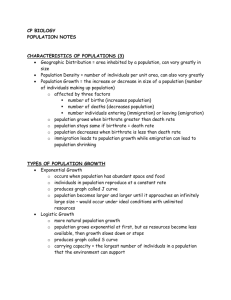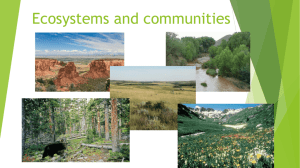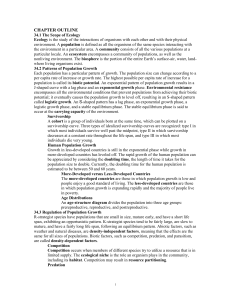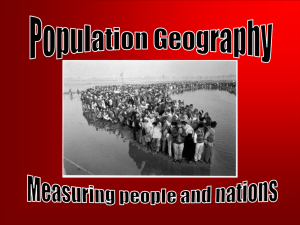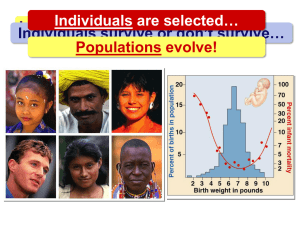Slideshow
advertisement
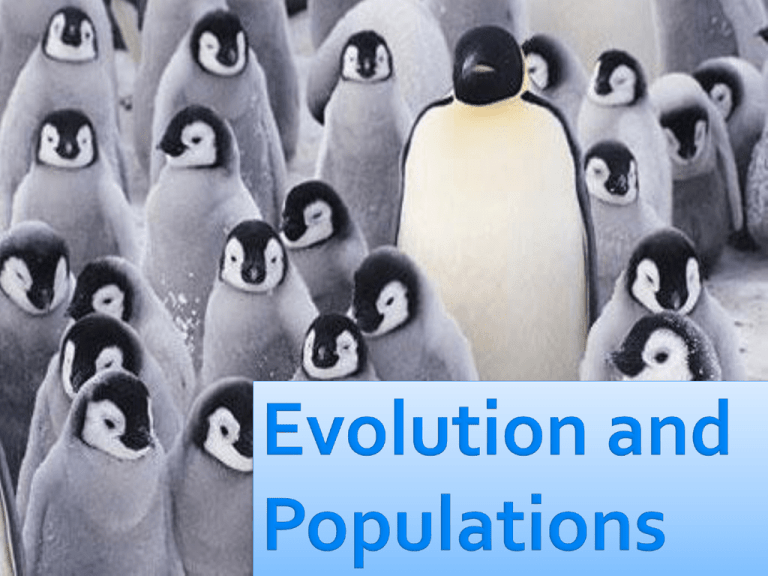
Population: Is a group of individuals of the same species that can mate and produce offspring. Gene Pool: Consists of all the genes and alleles that are present in a population. Allele frequency: is the number of times an allele occurs in a gene pool, compared to the total number of alleles in a gene pool. Evolution, in genetic terms, involves a change in the frequency of alleles in a population over time. The 3 sources for genetic variation 1Mutations 2Genetic Recombination in Sexual Reproduction 3Lateral Gene Transfer Organisms provided with ideal conditions for growth and reproduction will experience a rapid increase in its population. The larger the population the faster it grows Populations will grow exponentially if not threatened by death. Most populations go through a number of growth phases, which can be represented on a logistic growth curve. Limiting Factor: Is a factor that controls the growth of a population and determine the carrying capacity of a species. Population Size Natural Disaster Competition Unusual Weather Predation Parasitism and Disease In the distant past most people lived in small tribes that hunted and gathered plants for food (little effect on the environment) Overtime the human population has increased (causing major effects on the planet) Many people unaware of their actions and the effect on the planet Many environmental problems loom large and seem urgent today because of the rapid increase in human population. The huge number of humans on the Earth are making enormous demands on the planet. Birthrate is greater than the deathrate. Birthrate and deathrate vary from one country to another Life expectancy is longer (advances in medical, food, shelter, etc) As human populations grow, their effects on the environment grow. More people = more food = more fields = destroying land The lifestyle of a population also contributes to the extraordinary environmental demands made on the Earth. Example: U.S. Although our population growth has stabilized at a low level, we use more energy and more natural resources than any other country in the world. Density-Dependent Limiting Factors Competition Predation and Herbivory Parasitism and Disease Stress From Overcrowding Competition: When populations become crowded, individuals compete for food, water, space, and other essentials. Predation and Herbivory: The effects of predators on prey and herbivores on plants. Example: Wolves vs moose or moose on plants Parasitism and Disease: Parasites and disease causing disease and death in a population. Stress from Overcrowding: Some species fight amongst themselves if overcrowded. Density-Independent Limiting Factors: Affect all populations in similar ways, regardless of population size and density Examples: Unusual weather


